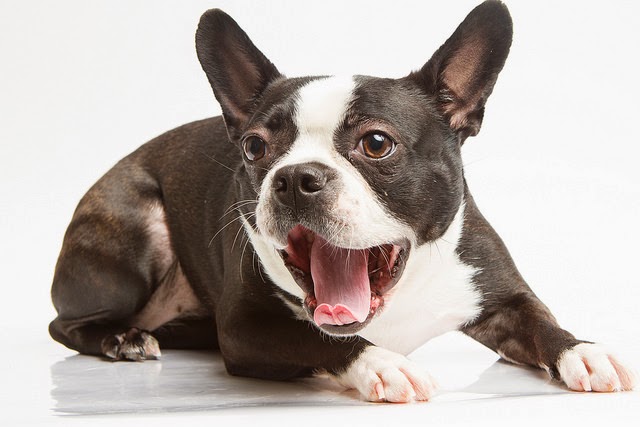February 12, 2015
February is Pet Dental Health Month
 |
| Say “Ah” Lola! |
Dental disease can be a big problem for cats and dogs. By age three, the majority will have some degree of dental disease, potentially leading to some serious health consequences for your pets.
Over time, plaque and tartar gradually build up on your pet’s teeth. Eventually, this build up will start to move under the gum line causing inflammation of the gums, known as gingivitis. Gingivitis is one of the earliest signs of periodontal disease, the majority of which happens below the gum line, making it very difficult to see the extent of the damage in your pet’s mouth.
As periodontal disease gets worse, it destroys the bone around your pet’s tooth. This will continue until the tooth is eventually lost. This can cause significant pain and infection. Pets with periodontal disease also tend to have bad breath. Untreated, this can lead to pathologic jaw fractures from bone loss, infection of the jawbone, and nasal infections. Aside from periodontal disease causing oral problems, it can also have systemic consequences, affecting the kidneys, liver and heart.
Unfortunately, at the Ottawa Humane Society we see many animals with advanced, untreated periodontal disease.
Another very common dental problem in cats is feline oral resorptive lesions. These are often referred to as “cat cavities” and are caused by normal cells of the teeth eating away at the cat’s own teeth. These are very painful lesions once they are in the advanced state. Cats are also commonly plagued by a condition known by many names but most commonly called feline plasma cell gingivitis/stomatitis. This disease is an immune mediated problem causing severe and often painful inflammation of the gums and mouth.
 |
| Dental care at the OHS |
Other oral problems include orthodontic issues, dead/worn/fractured teeth, unerupted teeth, and retained baby teeth.
As you can imagine, we see all of the above on a regular basis here at the OHS. Many of our cats and dogs have to undergo a general anesthesia for a complete oral health assessment and treatment, since it is impossible to provide a thorough dental cleaning and oral examination on a pet that is awake. We remove tartar via dental scaling and then we polish the teeth to help prevent the accumulation of more tartar. We take dental radiographs as needed to assess various dental conditions. We pull severely diseased/worn/fractured/retained teeth when necessary and to correct painful underbites and overbites. Healing from extractions generally takes seven to 10 days. I treat animals with post-operative pain relief medication and they usually require soft food while healing. Last year alone, we did 542 dental procedures at the OHS.
Regular veterinary visits are crucial to monitoring your pet’s oral health. Your veterinarian will do a preliminary examination of your pet’s mouth at your annual general check up. Your veterinarian can recommend many ways to help your pet’s mouth stay healthy, which is an important part of caring for your pet’s health.
Dr. Shelley Hutchings
OHS Chief Veterinarian
OHS Chief Veterinarian
